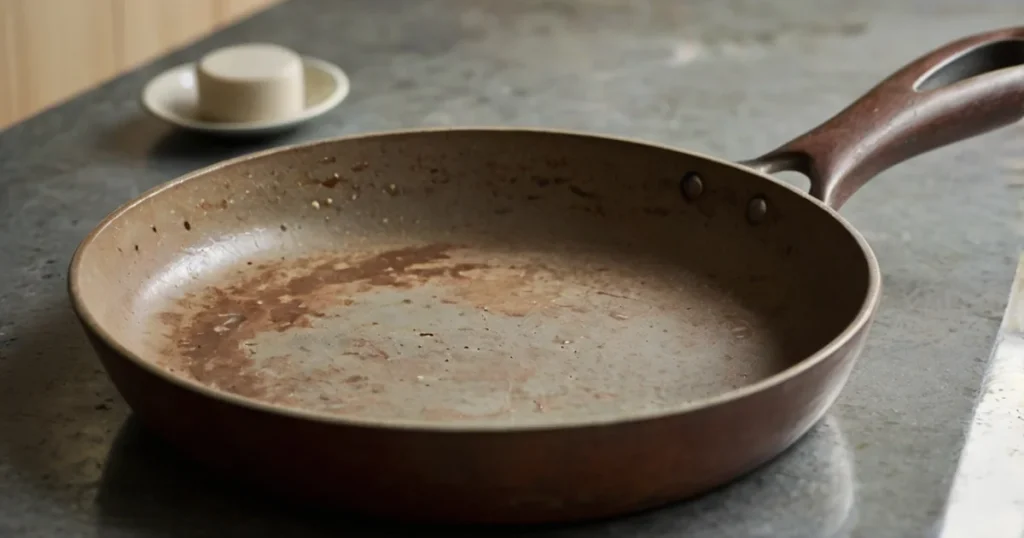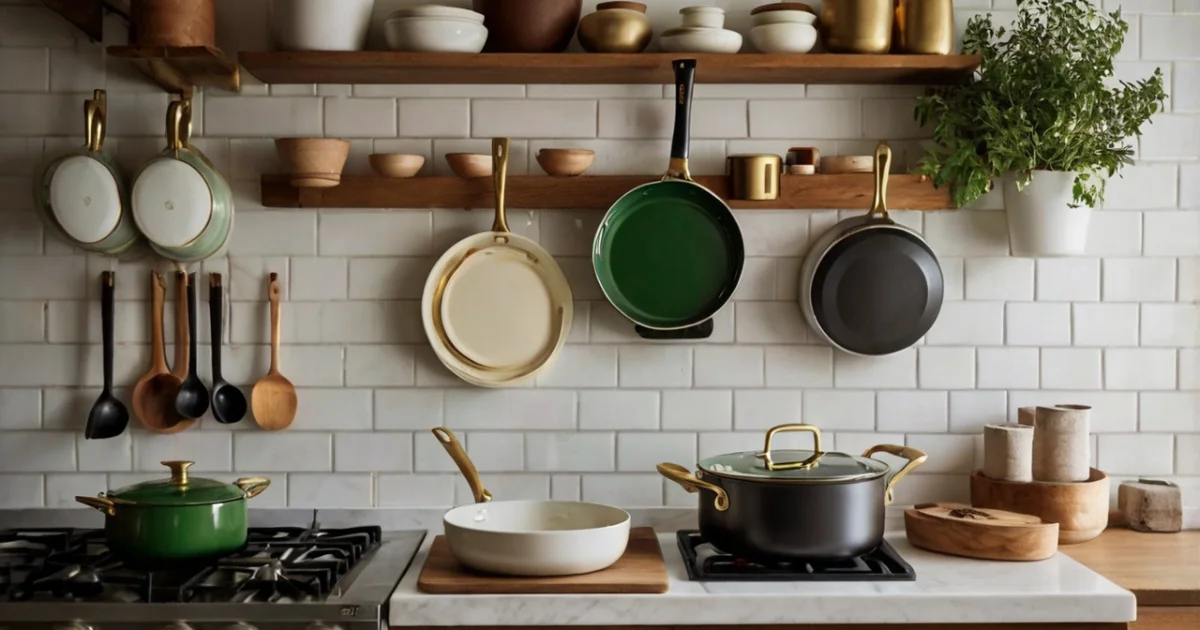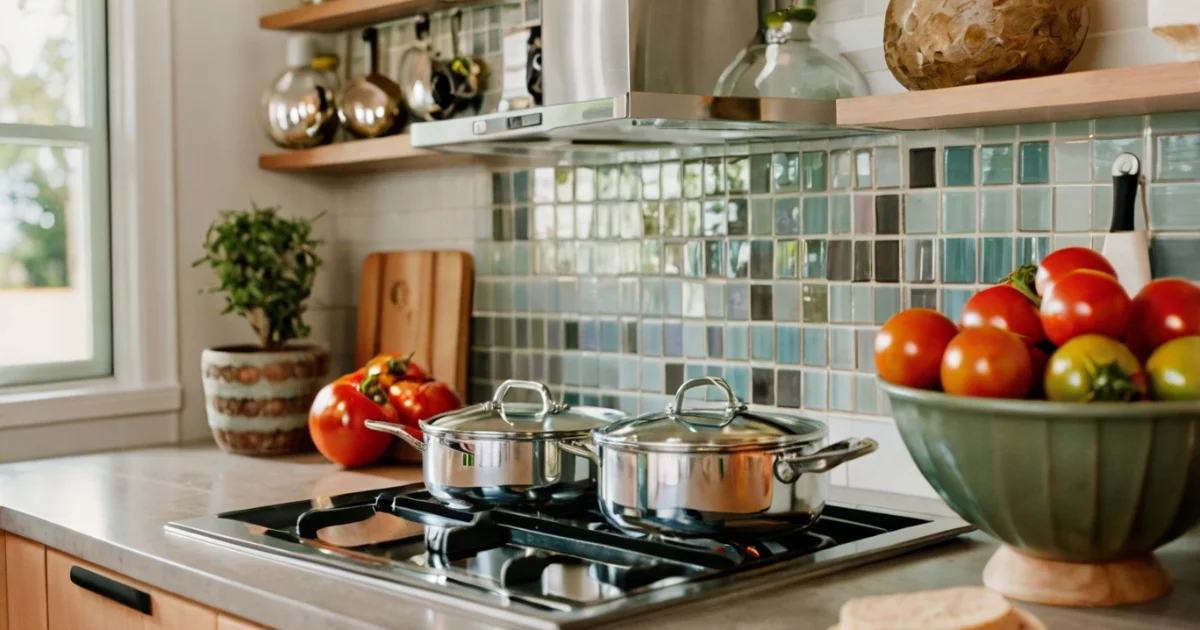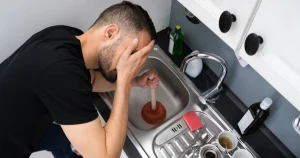How to Care for Ceramic Cookware? Expert Opinion
Ceramic cookware is loved for its non-stick properties, even heat distribution, and aesthetic appeal. However, proper care is essential to maintain its performance and longevity. This guide provides detailed steps, tips, and tricks to help you how to care for ceramic cookware and enjoy flawless cooking experiences.
Table of Contents
Understanding Ceramic Cookware
What Is Ceramic Cookware?
Ceramic cookware refers to pots, pans, and other cooking tools made with a ceramic coating or entirely from ceramic materials. The coating is often applied to metal bases like aluminum or stainless steel to provide nonstick and heat-retentive properties.
Types of Ceramic Cookware:
- Pure Ceramic: Made entirely from clay or natural materials, often used for baking or slow cooking.
- Ceramic-Coated: Metal cookware with a ceramic layer that offers nonstick performance.
Benefits of Ceramic Cookware:
- Non-toxic and free from harmful chemicals like PTFE.
- Excellent nonstick performance for low-fat cooking.
- Aesthetic appeal with vibrant colors and designs.
Why Proper Care Matters
Ceramic cookware, while durable, has a delicate non-stick coating that requires special attention. Neglecting proper care can lead to scratches, reduced non-stick performance, and a shorter lifespan.
Also read: What is Waterless Cookware?
Common Issues with Ceramic Cookware

While ceramic cookware is durable, it is not without challenges:
- Scratches and Chips: Improper handling or use of metal utensils can damage the coating.
- Stains and Discoloration: Prolonged exposure to high heat or acidic foods can leave marks.
- Loss of Nonstick Properties: Over time, the nonstick surface may degrade if not cared for properly.
Understanding these issues helps prevent damage and maintain functionality.
Tools and Supplies for Caring for Ceramic Cookware
To properly clean and maintain your ceramic cookware, you’ll need:
Cleaning Tools:
- Soft sponges or microfiber cloths.
- Non-abrasive scrub brushes for stubborn residue.
Cleaning Agents:
- Mild dish soap.
- Baking soda and white vinegar for deep cleaning.
- Commercial ceramic-safe cleaners (optional).
Avoid abrasive scrubbers or harsh chemicals that can damage the ceramic surface.
Step-by-Step Guide on How to Care for Ceramic Cookware
1. Before First Use
- Wash Thoroughly: Rinse with warm, soapy water to remove any manufacturing residues.
- Season (Optional): Some ceramic cookware benefits from seasoning. Apply a thin layer of oil and heat the pan gently to enhance the non-stick surface.
2. During Cooking
Use the Right Utensils
- Opt for silicone, wood, or plastic utensils to prevent scratches.
- Avoid metal tools that can damage the non-stick coating.
Low to Medium Heat
- Ceramic cookware conducts heat efficiently; high heat can damage the surface.
- Use low to medium heat settings for most cooking tasks.
Avoid Overheating
- Prolonged empty heating can cause the ceramic coating to deteriorate.
- Always add oil, water, or food before heating.
3. Cleaning Ceramic Cookware
Handwashing Is Best
- Use a soft sponge and mild dish soap to clean the surface.
- Avoid abrasive scrubbers or steel wool that can scratch the coating.
Stubborn Stains
- Create a paste with baking soda and water, apply it to the stains, and let it sit for 15 minutes.
- Gently scrub with a soft sponge and rinse thoroughly.
Dishwasher Use
- While some ceramic cookware is dishwasher-safe, handwashing is recommended to prolong its lifespan.
- If using a dishwasher, ensure the cookware is secured to prevent chipping.
4. Storage Tips
- Use pan protectors or soft cloths between stacked pieces to avoid scratches.
- Store lids separately to prevent pressure on the ceramic surface.
5. Avoid These Common Mistakes
- Metal Utensils: Never use metal tools as they can scratch the surface.
- Thermal Shock: Avoid moving hot cookware directly to cold water; it can cause cracking.
- Cooking Sprays: Aerosol sprays can build up residue over time. Opt for a small amount of regular cooking oil instead.
- Overloading: Don’t overcrowd the pan during cooking; it can lead to uneven heat distribution.
6. When to Replace Ceramic Cookware
- If the surface becomes excessively scratched or the non-stick coating deteriorates, it’s time to replace the cookware.
- Look for signs like food sticking persistently or visible cracks.
7. Daily Cleaning
- Allow the cookware to cool completely before cleaning to prevent warping.
- Rinse with warm water to remove food residue.
- Use a soft sponge and mild dish soap to clean the surface gently.
- Rinse thoroughly and dry with a microfiber cloth to avoid water spots.
8. Cleaning Burnt Food or Grease
- Soak the cookware in warm, soapy water for 15–20 minutes.
- Sprinkle baking soda on tough spots and scrub gently with a non-abrasive brush.
- Rinse and dry thoroughly.
Seasoning Ceramic Cookware (When Necessary)
Some ceramic cookware benefits from periodic seasoning to maintain its nonstick properties:
How to Season:
- Clean the cookware thoroughly and dry it completely.
- Apply a thin layer of vegetable or olive oil to the surface.
- Heat the cookware on low for a few minutes, then let it cool.
- Wipe off excess oil with a paper towel.
This process creates a protective layer that enhances nonstick performance.
Dos and Don’ts for Using Ceramic Cookware
Dos:
- Use silicone, wood, or nylon utensils to avoid scratches.
- Cook on low to medium heat for best results.
- Preheat cookware gradually to prevent thermal shock.
Don’ts:
- Avoid using metal utensils or sharp tools.
- Do not use high heat, as it can damage the coating.
- Never cut food directly on ceramic surfaces.
Storing Ceramic Cookware Safely
Proper storage prevents chips and cracks:
Best Practices:
- Use felt or silicone pan protectors when stacking cookware.
- Hang pots and pans on hooks to save space and avoid scratches.
- Store lids separately to prevent pressure on the cookware’s surface.
How to Handle Stains and Discoloration
Stubborn stains can be treated with household solutions:
Using Baking Soda and Vinegar:
- Mix equal parts baking soda and water to form a paste.
- Apply the paste to the stained area and let it sit for 15 minutes.
- Scrub gently with a soft sponge and rinse thoroughly.
Preventing Future Staining:
- Avoid cooking highly acidic or colored foods without sufficient oil or liquid.
Restoring Nonstick Properties
If your ceramic cookware loses its nonstick ability:
- Clean thoroughly to remove grease or residue.
- Season the cookware as outlined above.
- Avoid overheating the pan, which can damage the coating.
Extending the Lifespan of Ceramic Cookware
Routine care ensures long-term use:
- Clean immediately after each use to prevent residue buildup.
- Inspect for chips or cracks regularly and replace damaged cookware.
- Store carefully to maintain the integrity of the ceramic coating.
- If you have a high-powered stove, use a diffuser to distribute heat evenly.
- Allow the pan to heat gradually to avoid stressing the ceramic layer.
- Always dry the cookware completely after washing to prevent water spots or stains.
Ceramic Cookware vs. Other Types of Cookware
Comparison:
| Feature | Ceramic Cookware | Stainless Steel | Cast Iron |
|---|---|---|---|
| Nonstick | Excellent | Requires oil | Develops a natural coating |
| Weight | Lightweight | Medium | Heavy |
| Maintenance | Easy | Moderate | Requires seasoning |
| Toxicity | Non-toxic | Non-reactive | May react with acidic foods |
Using Ceramic Cookware on Different Heat Sources
- Gas Stoves: Suitable for ceramic cookware, but avoid exposing handles to direct flames.
- Electric and Induction Cooktops: Ensure the cookware has a flat base for even heat distribution.
- Ovens: Check the manufacturer’s instructions for oven-safe temperature limits.
Environmental Benefits of Ceramic Cookware
Ceramic cookware is an eco-friendly choice for environmentally conscious cooks:
- Made from natural, non-toxic materials.
- Long-lasting design reduces waste.
- Often manufactured with lower environmental impact compared to other cookware types.
Cost of Ceramic Cookware and Value for Money
Ceramic cookware ranges in price based on quality and brand:
- Budget options: $30–$50 for basic sets.
- Premium brands: $100–$300 for high-quality cookware.
Investing in good ceramic cookware pays off with durability and performance.
Troubleshooting Common Ceramic Cookware Problems
Food Sticking to the Surface:
- Cause: Residue buildup or high heat.
- Solution: Clean thoroughly and season the cookware.
Cracked or Chipped Cookware:
- Cause: Improper storage or dropping.
- Solution: Replace damaged pieces; they cannot be repaired.
Persistent Stains:
- Cause: Cooking acidic or colored foods.
- Solution: Use baking soda and vinegar as outlined above.
Conclusion
Caring for ceramic cookware is simple and ensures it remains a staple in your kitchen for years. By following these expert tips on cleaning, cooking, and storage, you can maintain its non-stick performance, beautiful appearance, and durability. Invest in the care, and your ceramic cookware will reward you with consistent, healthy, and hassle-free cooking experiences.
FAQs About Ceramic Cookware Care
1. Can I put ceramic cookware in the dishwasher?
While some ceramic cookware is dishwasher safe, hand washing is recommended to preserve the coating.
2. Is ceramic cookware safe for high-heat cooking?
It’s best used on low to medium heat to prevent damage.
3. How often should I clean my ceramic pans?
Clean after each use to prevent residue buildup.
4. Can ceramic cookware handle metal utensils?
No, use silicone, wood, or nylon utensils to avoid scratching the surface.
5. What should I do if my ceramic pan loses its nonstick surface?
Clean it thoroughly and season it to restore its performance.
6. Are ceramic pans truly non-toxic?
Yes, most ceramic cookware is free from harmful chemicals like PTFE.







Post Comment